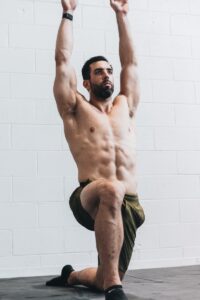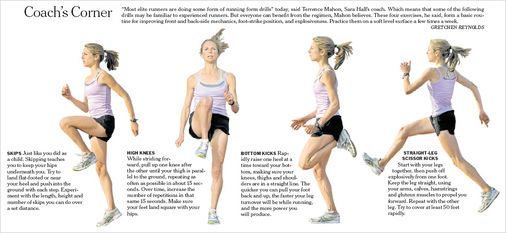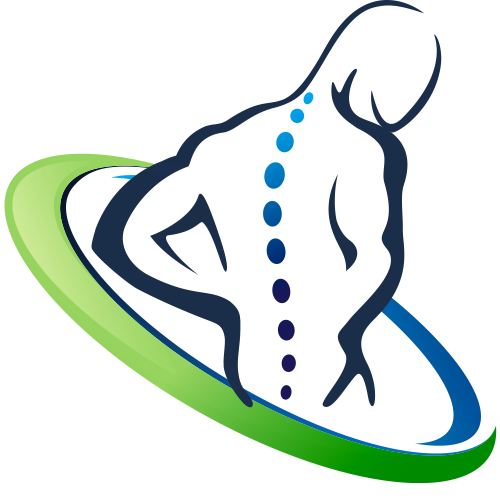The New York Times printed an article called Stretching: The Truth, which claimed that static stretching was no good for you. It quoted experts claiming that stretching was useless and might even be bad for athletes. Unfortunately, the article didn’t provide the whole truth. Not that it stretched the truth, by any means; it just missed the mark overall. The experts who were cited in this article were ignorant of both the physiology and purpose of stretching—too bad for them. And too bad for readers who take the NY Times as gospel—they might stop stretching altogether because of this article, and that would be a shame. But that won’t happen to my readers, even if they also read and trust the NY Times . That’s because they know I’m going to give them the straight dope when it comes to stretching. As any one of my regular Los Angeles, Beverly Hills or West Hollywood chiropractic clients knows, I’m a staunch advocate of regular stretching, and I have got the physiological facts to back it up.

The Knock Against Stretching
The gist of the NY Times article was that static stretching—holding a stretch for 20-30 seconds or longer—is a poor way for athletes to warm up. Experts who were used in the story, like the kinesiology professor from Cal State Chico, were left aghast while watching athletes do forward bends before a soccer game. The professor claimed that watching athletes stretch before a game was “discouraging,” since stretching actually weakens a muscle. Stretching to warm up, then, is counterproductive—athletes will actually become fatigued before an event.
The article went on to state that stretching as a way of warming up was almost “universally practiced among amateur athletes,” and used kids’ soccer teams as their example. What they went on to recommend was to do dynamic stretching, a form of stretching where the body continues moving. After discussing a few dynamic stretching techniques, the article finished-up by reiterating a recent “truth” about the failure of static stretching to prevent injuries; yet it had to admit that one major study published by the Centers of Disease Control (CDC) saw a 50% reduction in knee injuries among female collegiate soccer players who both warmed up sufficiently and stretched statically.

The Real Truth about Stretching
These types of news stories rub me the wrong way for two reasons: First, they take a very small truth, a physiological fact, and stretch it in such a way as to generalize a rule. And unfortunately, this type of truth-stretching is typically off base. What else irks me is that it takes ignorance and reports it as truth, basically scaring the layman who has very little knowledge of the subject, and takes the word of his or her local newsperson as fact. I’ve seen it happen so often with many health stories that it’s sickens me. From “debunking the myth” of needing to properly hydrate, to pointing out the uselessness of vitamin supplements, to exposing the fallacy of stretching for health, reports like these come out every year and only act as a source of more confusion for the reader and the general public. So let’s take a look at the aforementioned NY Times story and dissect it. When we’re done you’ll see that stretching is both good for you and necessary part of maintaining great health.
Let me start by telling you where the article was actually correct in its assessment. Without a doubt, stretching IS a poor choice of warm-up exercise. Static stretching, as they have explained, will lead to muscle fatigue (as much as a 30% decrease, according to one study). This is because stretching is a form of eccentric contraction. Before I get into the details of eccentric contractions, let me clarify a principle of muscle physiology: there is passive stretching, or passive lengthening, which I call cobweb removal, and then there is active stretching, which is true stretching. Passive stretching is simply allowing the muscles to lengthen through the use of gravity, like bending over to touch one’s toes. It’s passive because no concerted muscle contraction happens at all. It’s a good way to get the cobwebs out, I always say. This is the type of stretching, I highly recommend, on days when there is little time to devote to a proper stretch routine, but it will simply not bring length to your muscles.
Muscle lengthening will only result from active stretching. And because active stretching IS muscle lengthening—that is, consciously pulling apart the muscle with a force just greater than a contraction—then it, too, is a form of muscle contraction. To get a better understanding of eccentric contractions, think about what happens when you lift weights. When you contract muscle you do work against resistance. This brings the two bones that are attached to the muscle closer together. Let’s take a simple example: biceps curls. When you contract your biceps, your forearm comes toward your upper arm (or your hand toward your shoulder). When you lower the weight, you don’t just drop it passively; that would hurt at the very least, and more likely, you’d drop the weight on your foot. Instead, you lower the weight slowly, allowing the force of the down-coming weight to just exceed your contraction strength. It is a slow, controlled movement. That’s what an eccentric contraction is, at its most basic, a movement smoother.

Eccentric contractions actually generate more force than concentric contractions, so whether lowering a weight or stretching a muscle, an eccentric contraction also does work. This work tears muscle tissue microscopically, and as a result, necessitates repair. Repair of micro-torn muscle tissue leads to growth, strength, endurance, and in the case of stretching, muscle lengthening.
So, indeed, actively stretching a muscle will lead to muscle fatigue immediately following the stretch. Passive stretching will too, because even passive stretching is a form of eccentric contraction, albeit to a lesser degree. It shouldn’t be too hard to see, then, that stretching before an event will actually weaken and slow a player down—stretching is a workout. That’s why you get sore from doing yoga. Yoga is not passive stretching; it’s an active exercise; and people who regularly practice yoga get ripped. Eccentric contractions are good stuff—just not as a warm-up is all.
Warming Up: The Proper Way
Warming up before any athletic event is essential—that includes before working out. I always recommend getting the blood flowing before exercising, which loosens-up muscles and prepares them for work. A good warm up is anything that gets you sweating. For instance, I like the stationary bike, but any piece of cardio equipment at the gym will do (treadmill, elliptical walker, stair-climber, etc). So will running in place, jumping rope, or even walking to the gym if that’s your routine. Anything that gets you sweating, in my opinion, is a great way to warm up. I suggest keeping it short. No need to go beyond ten minutes—anything longer than that is overkill, and it will affect your game or workout.
What I did like about the NY Times piece is that they discussed dynamic warm-ups, which are movements that simulate what you’ll do in a game. So, for instance, if you are a sprinter, then lunges, squats and “form drills” (kicking your heel to your butt or high steps) are great warm-ups (check out a video here). The article and the experts were right-on there—dynamic warm-ups are a fantastic way to get yourself ready to play.
The Benefits of Stretching
So here is my second beef with articles like this one from the NY Times : it assumes people stretch merely to warm up. Wrong! Stretching builds strength, provides flexibility, and if done properly, promotes good balance. If you’ve read my book, The Six Keys to Optimal Health, then you know the physiology of muscle lengthening. Stretching is a necessary component of any fitness regimen. By increasing muscle length, you give your joints the freedom to move through their entire range of motion. A body that is free to move is healthier, stronger, and more balanced; it will be able to function at its highest athletic level. You’ll run faster, jump higher, have a stronger serve, and be better able to stay on your surfboard with lengthened muscles and greater freedom of movement. Even if you’re not an athlete in the general sense, you’ll still function better with freely moving joints and muscles. Movement is necessary for life—without proper movement, we can’t be well. It’s as simple as that.
Stretching also removes pain. Being a chiropractor in Los Angeles and the Coachella Valley, a very large portion of my clients come in with pain directly related to tight, short muscles. Low back pain, neck pain, headaches, shoulder pain, hip pain, and a bevy of other pain syndromes are directly caused by tight muscles. Guess what we do in my office to help people like this get out of pain and get back into the game? That’s right—we adjust them chiropractically, and then we stretch their short, tight muscles!
The Real Danger
 Yes, it’s true then, just as the NY Times reported—stretching is a poor warm-up activity. But is it useless? Hardly. In fact, there are so many health and fitness benefits associated with stretching that it’s impossible to go over every one of them here.
Yes, it’s true then, just as the NY Times reported—stretching is a poor warm-up activity. But is it useless? Hardly. In fact, there are so many health and fitness benefits associated with stretching that it’s impossible to go over every one of them here.
What really bothers me about these types of stories like the one in the NY Times is that the news media takes one side, speaks to a few experts, but fails to interview anybody with the opposite perspective. Why? Is it already settled in the mind of the “objective reporter”? The real danger is that the public has no way of discerning the truth from a simple one-sided opinion. My advice to news reporters working on these types of health pieces is: speak to both sides. A solitary state college kinesio professor is just not enough to establish fact with regard to stretching. Speak also to a few long-time yogis to get more a balanced perspective—then let the reader decide.
Anybody who has been under my care will attest to the incredible healing power of stretching. When evaluating the wisdom behind stretching, where are we to look for answers? Shall we rely solely on western physiology with its 50+ years of inquiry as reported by a biased media? Or shall we trust the 2,000 years of yoga practice from the east? Think about it: two thousand years! There has got to be something to it.
-November 30, 2008


